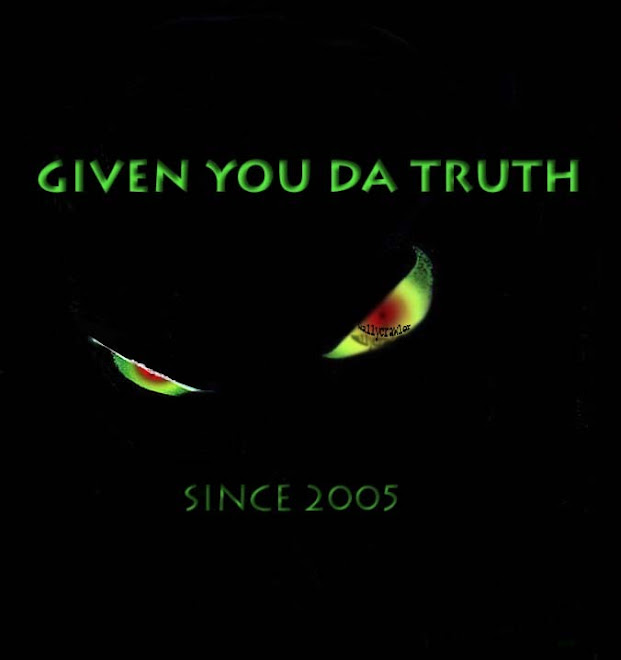Every American Should Read And Process This Article :
From Harper's Magazine March 2006 .

[Essay]
The Case for Impeachment
Why we can no longer afford George W. Bush
A country is not only what it does—it is also what it puts up with, what it tolerates. —Kurt Tucholsky
On December 18 of last year, Congressman John Conyers Jr. (D., Mich.) introduced into the House of Representatives a resolution inviting it to form “a select committee to investigate the Administration's intent to go to war before congressional authorization, manipulation of pre-war intelligence, encouraging and countenancing torture, retaliating against critics, and to make recommendations regarding grounds for possible impeachment.” Although buttressed two days previously by the news of the National Security Agency's illegal surveillance of the American citizenry, the request attracted little or no attention in the press—nothing on television or in the major papers, some scattered applause from the left-wing blogs, heavy sarcasm on the websites flying the flags of the militant right. The nearly complete silence raised the question as to what it was the congressman had in mind, and to whom did he think he was speaking? In time of war few propositions would seem as futile as the attempt to impeach a president whose political party controls the Congress; as the ranking member of the House Judiciary Committee stationed on Capitol Hill for the last forty years, Representative Conyers presumably knew that to expect the Republican caucus in the House to take note of his invitation, much less arm it with the power of subpoena, was to expect a miracle of democratic transformation and rebirth not unlike the one looked for by President Bush under the prayer rugs in Baghdad. Unless the congressman intended some sort of symbolic gesture, self-serving and harmless, what did he hope to prove or to gain? He answered the question in early January, on the phone from Detroit during the congressional winter recess.
“To take away the excuse,” he said, “that we didn't know.” So that two or four or ten years from now, if somebody should ask, “Where were you, Conyers, and where was the United States Congress?” when the Bush Administration declared the Constitution inoperative and revoked the license of parliamentary government, none of the company now present can plead ignorance or temporary insanity, can say that “somehow it escaped our notice” that the President was setting himself up as a supreme leader exempt from the rule of law.
A reason with which it was hard to argue but one that didn't account for the congressman's impatience. Why not wait for a showing of supportive public opinion, delay the motion to impeach until after next November's elections? Assuming that further investigation of the President's addiction to the uses of domestic espionage finds him nullifying the Fourth Amendment rights of a large number of his fellow Americans, the Democrats possibly could come up with enough votes, their own and a quorum of disenchanted Republicans, to send the man home to Texas. Conyers said:
“I don't think enough people know how much damage this administration can do to their civil liberties in a very short time. What would you have me do? Grumble and complain? Make cynical jokes? Throw up my hands and say that under the circumstances nothing can be done? At least I can muster the facts, establish a record, tell the story that ought to be front-page news.”
Which turned out to be the purpose of his House Resolution 635—not a high-minded tilting at windmills but the production of a report, 182 pages, 1,022 footnotes, assembled by Conyers's staff during the six months prior to its presentation to Congress, that describes the Bush Administration's invasion of Iraq as the perpetration of a crime against the American people. It is a fair description. Drawing on evidence furnished over the last four years by a sizable crowd of credible witnesses—government officials both extant and former, journalists, military officers, politicians, diplomats domestic and foreign—the authors of the report find a conspiracy to commit fraud, the administration talking out of all sides of its lying mouth, secretly planning a frivolous and unnecessary war while at the same time pretending in its public statements that nothing was further from the truth.[1] The result has proved tragic, but on reading through the report's corroborating testimony I sometimes could counter its inducements to mute rage with the thought that if the would-be lords of the flies weren't in the business of killing people, they would be seen as a troupe of off-Broadway comedians in a third-rate theater of the absurd. Entitled “The Constitution in Crisis; The Downing Street Minutes and Deception, Manipulation, Torture, Retribution, and Coverups in the Iraq War,” the Conyers report examines the administration's chronic abuse of power from more angles than can be explored within the compass of a single essay. The nature of the administration's criminal DNA and modus operandi, however, shows up in a usefully robust specimen of its characteristic dishonesty.
* * *
That President George W. Bush comes to power with the intention of invading Iraq is a fact not open to dispute. Pleased with the image of himself as a military hero, and having spoken, more than once, about seeking revenge on Saddam Hussein for the tyrant's alleged attempt to “kill my Dad,” he appoints to high office in his administration a cadre of warrior intellectuals, chief among them Secretary of Defense Donald Rumsfeld, known to be eager for the glories of imperial conquest.[2] At the first meeting of the new National Security Council on January 30, 2001, most of the people in the room discuss the possibility of preemptive blitzkrieg against Baghdad.[3] In March the Pentagon circulates a document entitled “Foreign Suitors for Iraqi Oil Field Contracts”; the supporting maps indicate the properties of interest to various European governments and American corporations. Six months later, early in the afternoon of September 11, the smoke still rising from the Pentagon's western facade, Secretary Rumsfeld tells his staff to fetch intelligence briefings (the “best info fast...go massive; sweep it all up; things related and not”) that will justify an attack on Iraq. By chance the next day in the White House basement, Richard A. Clarke, national coordinator for security and counterterrorism, encounters President Bush, who tells him to “see if Saddam did this.” Nine days later, at a private dinner upstairs in the White House, the President informs his guest, the British prime minister, Tony Blair, that “when we have dealt with Afghanistan, we must come back to Iraq.”
By November 13, 2001, the Taliban have been rousted out of Kabul in Afghanistan, but our intelligence agencies have yet to discover proofs of Saddam Hussein's acquaintance with Al Qaeda.[4] President Bush isn't convinced. On November 21, at the end of a National Security Council meeting, he says to Secretary Rumsfeld, “What have you got in terms of plans for Iraq?...I want you to get on it. I want you to keep it secret.”
The Conyers report doesn't return to the President's focus on Iraq until March 2002, when it finds him peering into the office of Condoleezza Rice, the national security advisor, to say, “Fuck Saddam. We're taking him out.” At a Senate Republican Policy lunch that same month on Capitol Hill, Vice President Dick Cheney informs the assembled company that it is no longer a question of if the United States will attack Iraq, it's only a question of when. The vice president doesn't bring up the question of why, the answer to which is a work in progress. By now the administration knows, or at least has reason to know, that Saddam Hussein had nothing to do with the 9/11 attacks on New York and Washington, that Iraq doesn't possess weapons of mass destruction sufficiently ominous to warrant concern, that the regime destined to be changed poses no imminent threat, certainly not to the United States, probably not to any country defended by more than four batteries of light artillery. Such at least is the conclusion of the British intelligence agencies that can find no credible evidence to support the theory of Saddam's connection to Al Qaeda or international terrorism; “even the best survey of WMD programs will not show much advance in recent years on the nuclear, missile and CW/BW weapons fronts...” A series of notes and memoranda passing back and forth between the British Cabinet Office in London and its correspondents in Washington during the spring and summer of 2002 address the problem of inventing a pretext for a war so fondly desired by the Bush Administration that Sir Richard Dearlove, head of Britain's MI-6, finds the interested parties in Washington fixing “the intelligence and the facts...around the policy.” The American enthusiasm for regime change, “undimmed” in the mind of Condoleezza Rice, presents complications.
Although Blair has told Bush, probably in the autumn of 2001, that Britain will join the American military putsch in Iraq, he needs “legal justification” for the maneuver—something noble and inspiring to say to Parliament and the British public. No justification “currently exists.” Neither Britain nor the United States is being attacked by Iraq, which eliminates the excuse of self-defense; nor is the Iraqi government currently sponsoring a program of genocide. Which leaves as the only option the “wrong-footing” of Saddam. If under the auspices of the United Nations he can be presented with an ultimatum requiring him to show that Iraq possesses weapons that don't exist, his refusal to comply can be taken as proof that he does, in fact, possess such weapons.[5]
Over the next few months, while the British government continues to look for ways to “wrong-foot” Saddam and suborn the U.N., various operatives loyal to Vice President Cheney and Secretary Rumsfeld bend to the task of fixing the facts, distributing alms to dubious Iraqi informants in return for map coordinates of Saddam's monstrous weapons, proofs of stored poisons, of mobile chemical laboratories, of unmanned vehicles capable of bringing missiles to Jerusalem.[6]
By early August the Bush Administration has sufficient confidence in its doomsday story to sell it to the American public. Instructed to come up with awesome text and shocking images, the White House Iraq Group hits upon the phrase “mushroom cloud” and prepares a White Paper describing the “grave and gathering danger” posed by Iraq's nuclear arsenal.[7] The objective is three-fold—to magnify the fear of Saddam Hussein, to present President Bush as the Christian savior of the American people, a man of conscience who never in life would lead the country into an unjust war, and to provide a platform of star-spangled patriotism for Republican candidates in the November congressional elections.[8]
* * *
The Conyers report doesn't lack for further instances of the administration's misconduct, all of them noted in the press over the last three years—misuse of government funds, violation of the Geneva Conventions, holding without trial and subjecting to torture individuals arbitrarily designated as “enemy combatants,” etc.—but conspiracy to commit fraud would seem reason enough to warrant the President's impeachment. Before reading the report, I wouldn't have expected to find myself thinking that such a course of action was either likely or possible; after reading the report, I don't know why we would run the risk of not impeaching the man. We have before us in the White House a thief who steals the country's good name and reputation for his private interest and personal use; a liar who seeks to instill in the American people a state of fear; a televangelist who engages the United States in a never-ending crusade against all the world's evil, a wastrel who squanders a vast sum of the nation's wealth on what turns out to be a recruiting drive certain to multiply the host of our enemies. In a word, a criminal—known to be armed and shown to be dangerous. Under the three-strike rule available to the courts in California, judges sentence people to life in jail for having stolen from Wal-Mart a set of golf clubs or a child's tricycle. Who then calls strikes on President Bush, and how many more does he get before being sent down on waivers to one of the Texas Prison Leagues?
* * *
The above is a brief excerpt from the complete essay, available in the March 2006 issue of Harper's Magazine.
Notes
1. The report borrows from hundreds of open sources that have become a matter of public record—newspaper accounts, television broadcasts (Frontline, Meet the Press, Larry King Live, 60 Minutes, etc.), magazine articles (in The New Yorker, Vanity Fair, The New York Review of Books), sworn testimony in both the Senate and House of Representatives, books written by, among others, Bob Woodward, George Packer, Richard A. Clarke, James Mann, Mark Danner, Seymour Hersh, David Corn, James Bamford, Hans Blix, James Risen, Ron Suskind, Joseph Wilson. As the congressman had said, “Everything in plain sight; it isn't as if we don't know.” [Back]
2. In January of 1998 the neoconservative Washington think tank The Project for the New American Century (which counts among its founding members Dick Cheney) sent a letter to Bill Clinton demanding “the removal of Saddam Hussein's regime from power” with a strong-minded “willingness to undertake military action.” Together with Rumsfeld, six of the other seventeen signatories became members of the Bush's first administration—Elliott Abrams (now George W. Bush's deputy national security advisor), Richard Armitage (deputy secretary of state from 2001 to 2005), John Bolton (now U.S. ambassador to the U.N.), Richard Perle (chairman of the Defense Policy Board from 2001 to 2003), Paul Wolfowitz (deputy secretary of defense from 2001 to 2005), Robert Zoellick (now deputy secretary of state). President Clinton responded to the request by signing the Iraq Liberation Act, for which Congress appropriated $97 million for various clandestine operations inside the borders of Iraq. Two years later, in September 2000, The Project for the New American Century issued a document noting that the “unresolved conflict with Iraq provides the immediate justification” for the presence of the substantial American force in the Persian Gulf. [Back]
3. In a subsequent interview on 60 Minutes, Paul O'Neill, present in the meeting as the newly appointed secretary of the treasury, remembered being surprised by the degree of certainty: “From the very beginning, there was a conviction that Saddam Hussein was a bad person and that he needed to go.... It was all about finding a way to do it.” [Back]
4. As early as September 20, Douglas Feith, undersecretary of defense for policy, drafted a memo suggesting that in retaliation for the September 11 attacks the United States should consider hitting terrorists outside the Middle East in the initial offensive, or perhaps deliberately selecting a non-Al Qaeda target like Iraq. [Back]
5. Abstracts of the notes and memoranda, known collectively as “The Downing Street Minutes,” were published in the Sunday Times (London) in May 2005; their authenticity was undisputed by the British government. [Back]
6. The work didn't go unnoticed by people in the CIA, the Pentagon, and the State Department accustomed to making distinctions between a well-dressed rumor and a naked lie. In the spring of 2004, talking to a reporter from Vanity Fair, Greg Thielmann, the State Department officer responsible for assessing the threats of nuclear proliferation, said, “The American public was seriously misled. The Administration twisted, distorted and simplified intelligence in a way that led Americans to seriously misunderstand the nature of the Iraq threat. I'm not sure I can think of a worse act against the people in a democracy than a President distorting critical classified information.” [Back]
7. The Group counted among its copywriters Karl Rove, senior political strategist, Andrew Card, White House chief of staff, National Security Advisor Condoleezza Rice, and Lewis “Scooter” Libby, Dick Cheney's chief of staff. [Back]
8. Card later told the New York Times that “from a marketing point of view...you don't introduce new products in August.” [Back]































































